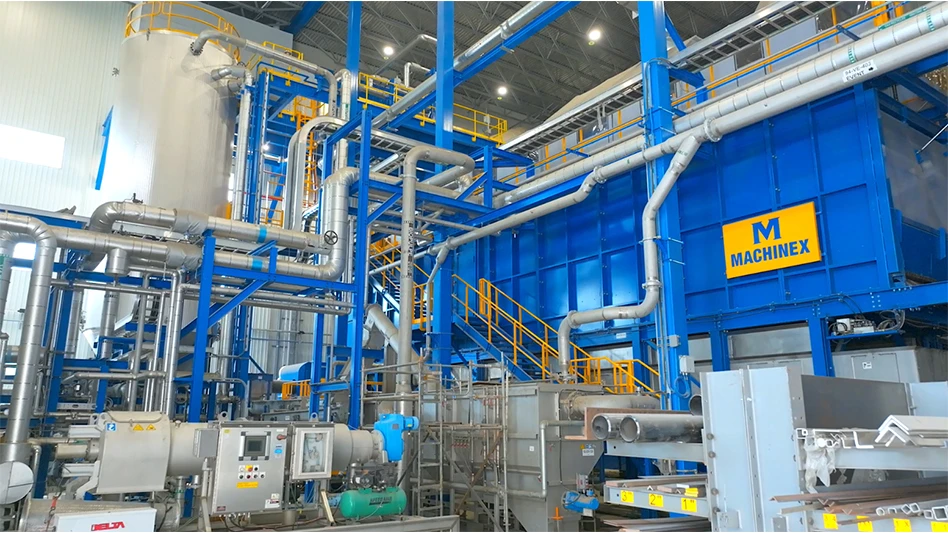Throughout the first six weeks of this year, tension underlay the scrap processing sector around attempts by domestic mill buyers to drive down the value of ferrous scrap.
Mills did not get the trap door-style price plunge they’d reportedly requested in January, with prices for commonly traded grades trending sideways or dropping slightly.
Davis Index reports that in February, mill buyers in several regions of the U.S. again requested lower prices, this time in the $30-per-ton range.
As of mid-February, Davis Index reports only prompt scrap has seen a double-digit price drop, while processors in most regions refused to drop the price of shredded scrap, plate and structural (P&S) and other forms of obsolete scrap by more than $3 to $7 per ton.
“Assuming a fair scrap marketplace— free from artificial, provoked and hard-to-explain moves—[there] is no good reason for scrap prices to go down.” – Lourenco Goncalves, president and CEO, Cleveland-Cliffs
Attempting to influence ferrous scrap pricing by having prebuying period conversations with others in the industry is a longtime if unacknowledged part of the negotiating process.
Traditionally, steel company employees talk down the demand and value of scrap. But, early this year, Cleveland-Cliffs President and CEO Lourenco Goncalves deviated from this pattern by asking whether prime ferrous scrap grades were undervalued in the market.
Along with the Cleveland-based steelmaker’s 2023 results, Goncalves hinted the company’s electric arc furnace- (EAF-) based competitors could be cultivating an unfair advantage via questionable scrap market practices.
Regarding the 2024 landscape for Cliffs, which makes most of its steel using lower volumes of scrap via blast furnaces/basic oxygen furnaces, Goncalves pointed to the price of scrap as a factor.
“Going forward, and assuming a fair scrap marketplace—free from artificial, provoked and hard-to-explain moves—with scrap demand growing and scrap supply shrinking, there is no good reason for scrap prices to go down,” he said.

Cliffs likely has two reasons to question—as well as ways to benefit from—high scrap prices: They raise the cost of doing business for competitors from the EAF sector, and Cliffs owns the Detroit-based Ferrous Processing & Trading (FPT) network of scrap yards.
Goncalves’ price scrutiny could be seen as a variation of the long-standing practice of urging buyers and sellers to hold fast to the position that favors them—this time with a mill executive favoring higher prices.
If mill buyers expect lower prices, however, they might need to convince scrap processors that their inflows are high enough to create a supply surplus. They also might have to demonstrate that mill demand is declining.
On the demand side, output statistics gathered by the Washington-based American Iron and Steel Institute (AISI), demonstrate a year-on-year decline but recent stability.
In the week of Feb. 10, output of about 1.7 million tons was down 5 percent from the comparable week in 2023. However, output was up by 0.5 percent from the previous week and has remained largely steady.
AISI says domestic steel output was down by 1.4 percent year to date, which provides some ammunition to mill buyers seeking lower scrap prices.
In January, steady export buying contributed to domestic mill buyers being unable to get the price-per-ton discounts they requested.

In the first two weeks of February, overseas buyers remained active even as they kept an eye on negotiations in the U.S. to help determine how to price their own bids to meet the market without greatly exceeding it.
According to Davis Index, that process led buyers in Turkey and India—two of the leading importers of U.S. scrap—to make bids a few dollars per ton short of or essentially even with what they paid in January for bulk and containerized shipments.
Overseas buying has been affected by attacks on ocean freight ships in the Red Sea and the subsequent rerouting of vessels, adding time and costs to shipping patterns.
At the 2024 Material Recycling Association of India (MRAI) Convention and Exposition in late January, two panelists indicated that, in the meantime, India-based scrap buyers are looking toward Australia and Japan as a way to avoid the Suez Canal/Red Sea trade route.
While European exporters could face the biggest hurdles as long as the Red Sea attacks continue, scrap exporters everywhere are facing freight rate hikes and potential container shortages that could become bigger headaches, according to a report from a freight services firm.
In the U.S., potential beneficiaries could be West Coast shippers, with the report saying, “Disruptions in the Suez, Red Sea passage and Panama Canal [where a drought has caused low water levels] will likely lead to increased demand for routing through the West Coast.”

Explore the March 2024 Issue
Check out more from this issue and find you next story to read.
Latest from Recycling Today
- Bangkok to host September paper recycling event
- Smithers sees growth in food-contact PCR market
- Liebherr USA adds sustainability GM
- BGL report finds solid foundations for sustainability investments
- Bridgestone introduces retreating plant virtual tour
- USTMA announces Tire Recycling Foundation
- Dow announces agreement with Freepoint and MOU for Asia Pacific market with SCGC
- Mixed signals chracterize ferrous market





